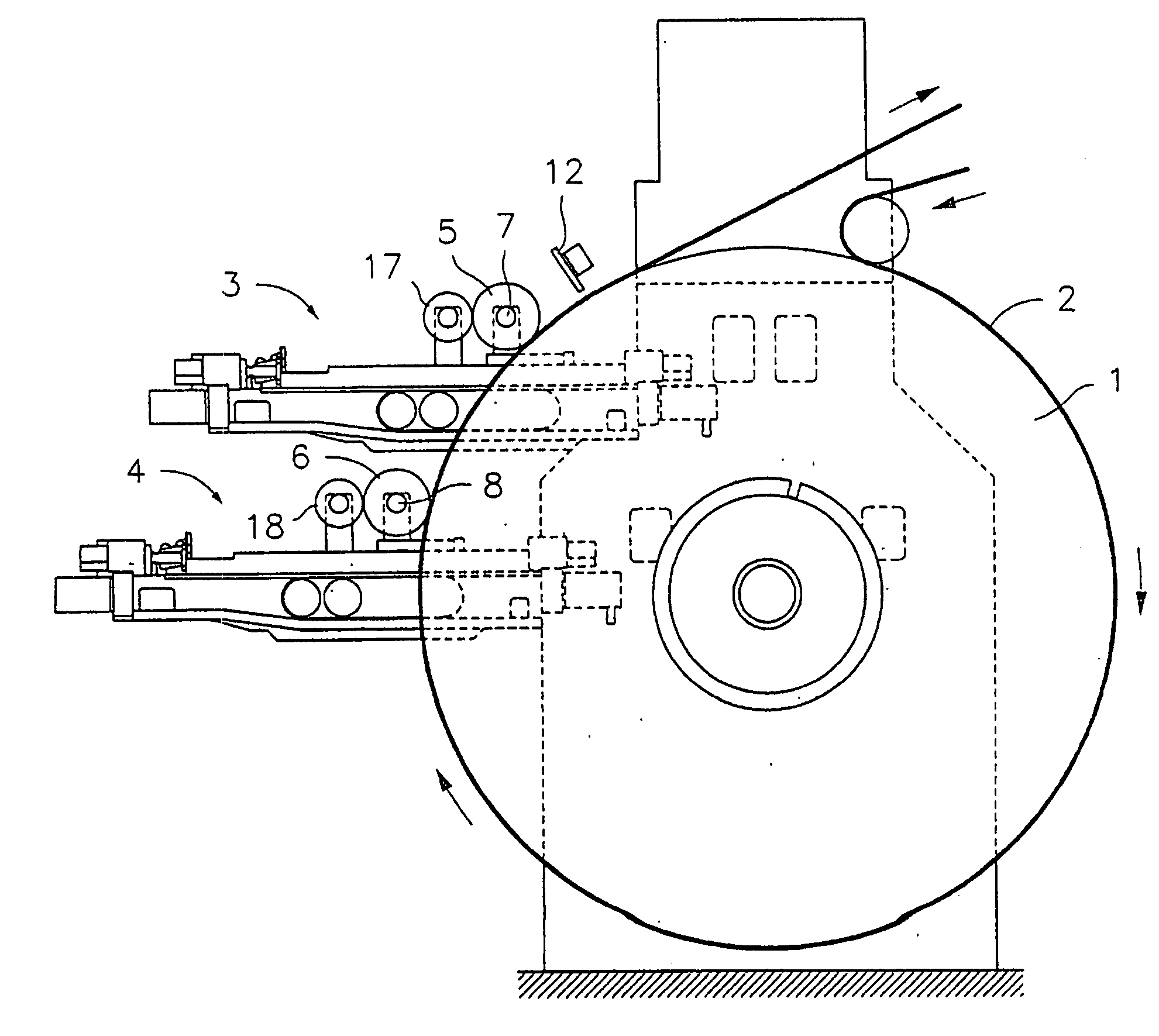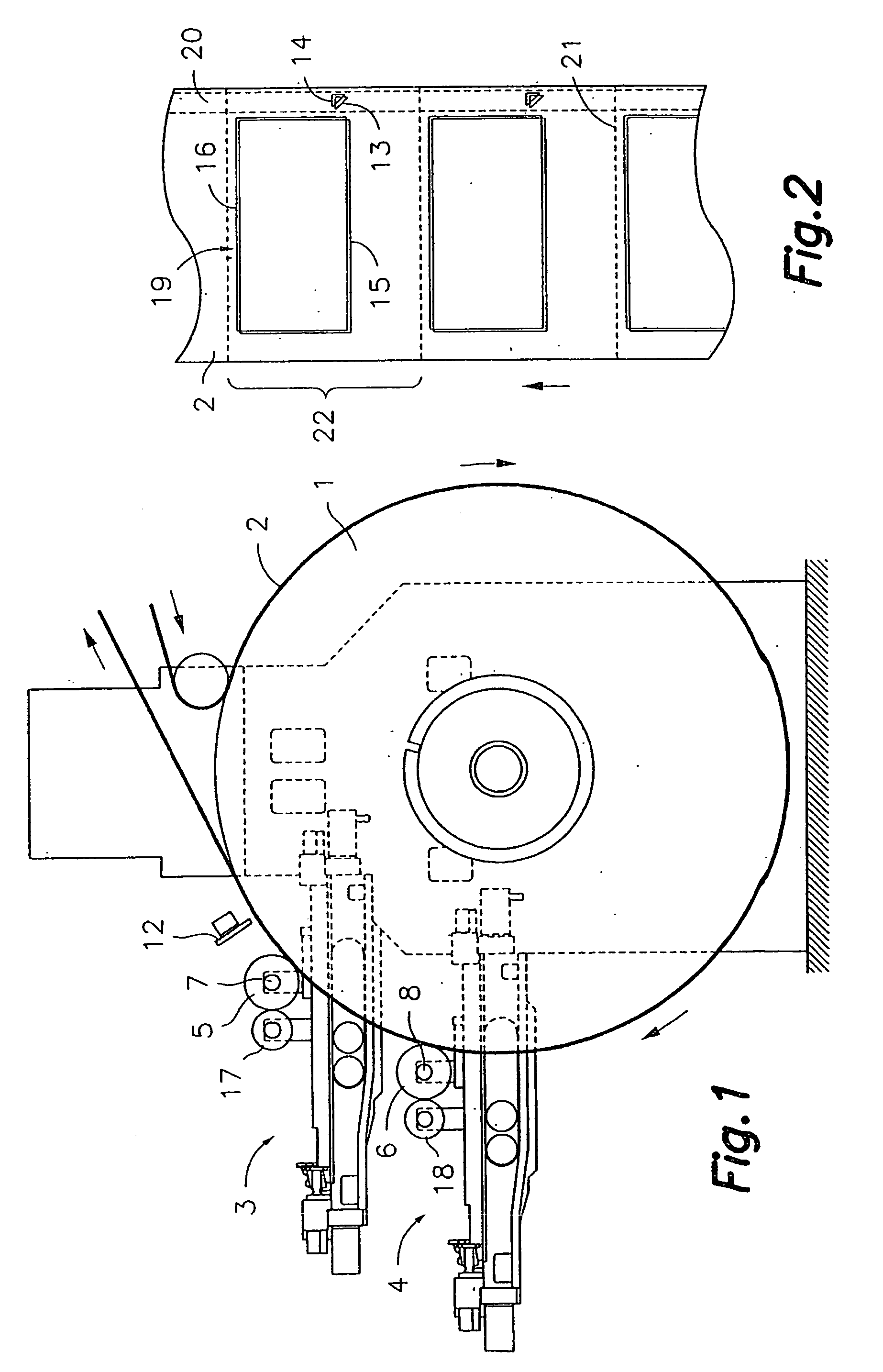Method of registering different colours in flexography, and flexographic printer comprising a device for implementing said method
a technology of flexographic printing and flexography, which is applied in the direction of printing, other printing apparatus, rotary presses, etc., can solve the problems of affecting the accuracy of roller adjustment, hammer reading operations, and inability to measure the distance between
- Summary
- Abstract
- Description
- Claims
- Application Information
AI Technical Summary
Benefits of technology
Problems solved by technology
Method used
Image
Examples
Embodiment Construction
[0026] First referring to FIG. 1, it shows a flexographic printer of the type consisting of a central rotating supporting drum 1, supporting the material to be printed 2 in the form of a continuous strip that moves in the direction indicated by the arrows next to the peripheral surface of the drum 2 as it rotates. Next to the supporting drum 2 are the first and second printing groups 3, 4, which include the respective first and second printing rollers 5, 6 and respective first and second ink rollers 17, 18. A printing configuration 15a, 16a (FIG. 7) is arranged at the periphery of each printing roller 5, 6, which constitutes the matrix or stencil of part of the motif to be printed. The cited first and second printing groups 3, 4 are configured, arranged and selectively driven to change between a printing position, in which the corresponding first and / or second printing rollers 5, 6 and consequently, the corresponding printing configuration, is in contact with said material to be pri...
PUM
 Login to View More
Login to View More Abstract
Description
Claims
Application Information
 Login to View More
Login to View More - R&D
- Intellectual Property
- Life Sciences
- Materials
- Tech Scout
- Unparalleled Data Quality
- Higher Quality Content
- 60% Fewer Hallucinations
Browse by: Latest US Patents, China's latest patents, Technical Efficacy Thesaurus, Application Domain, Technology Topic, Popular Technical Reports.
© 2025 PatSnap. All rights reserved.Legal|Privacy policy|Modern Slavery Act Transparency Statement|Sitemap|About US| Contact US: help@patsnap.com



